Head of Lucius Verus
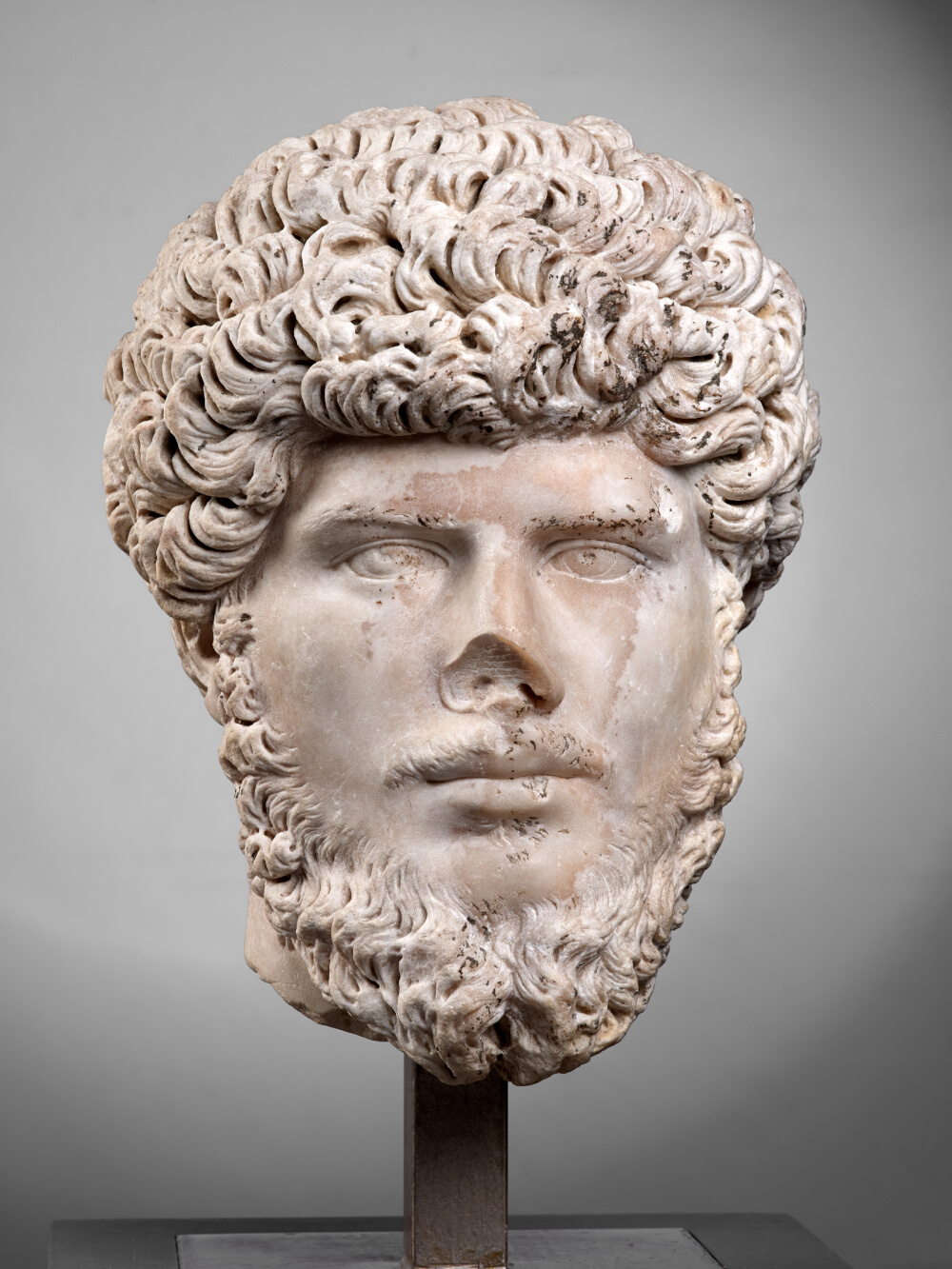
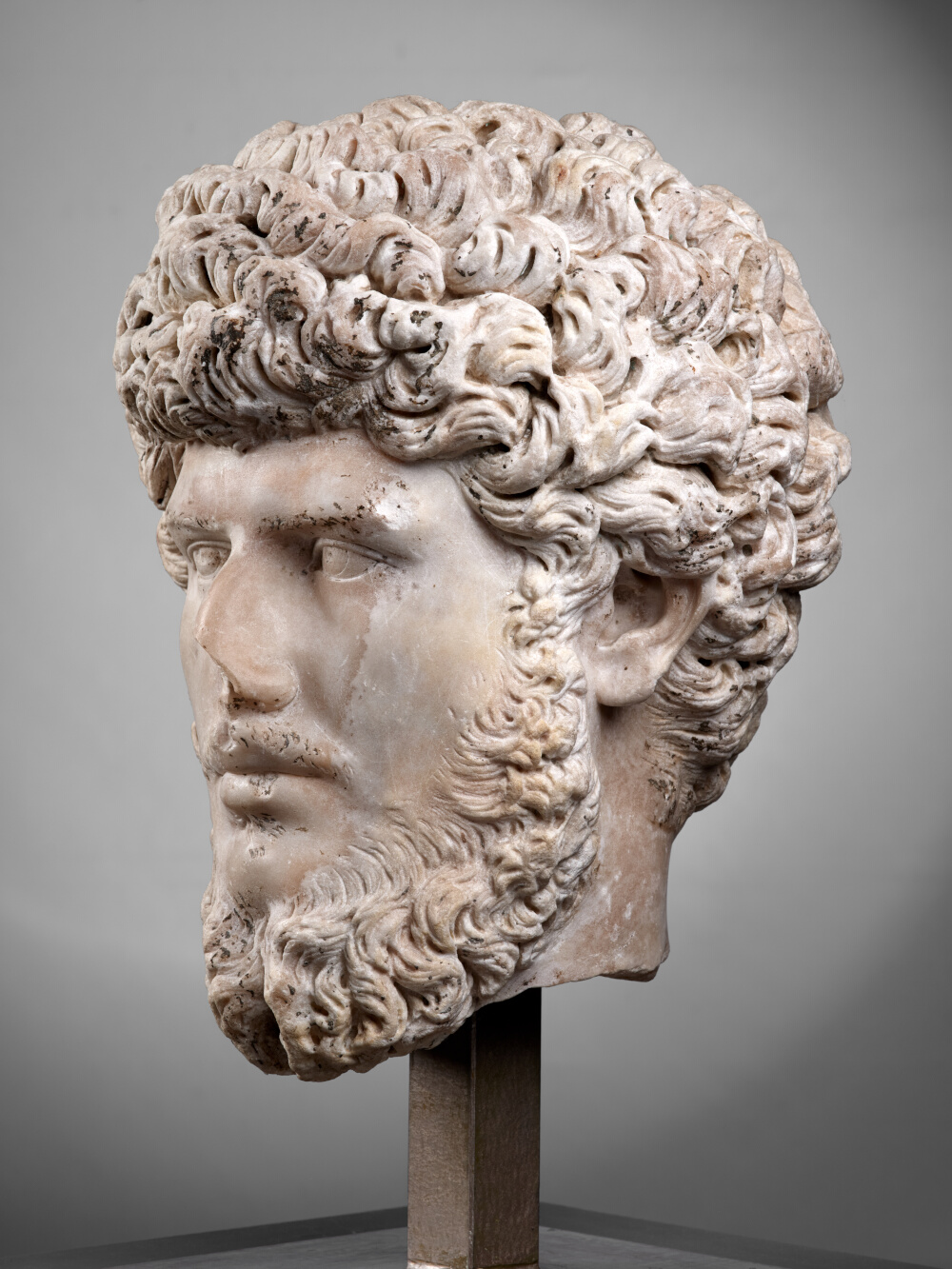
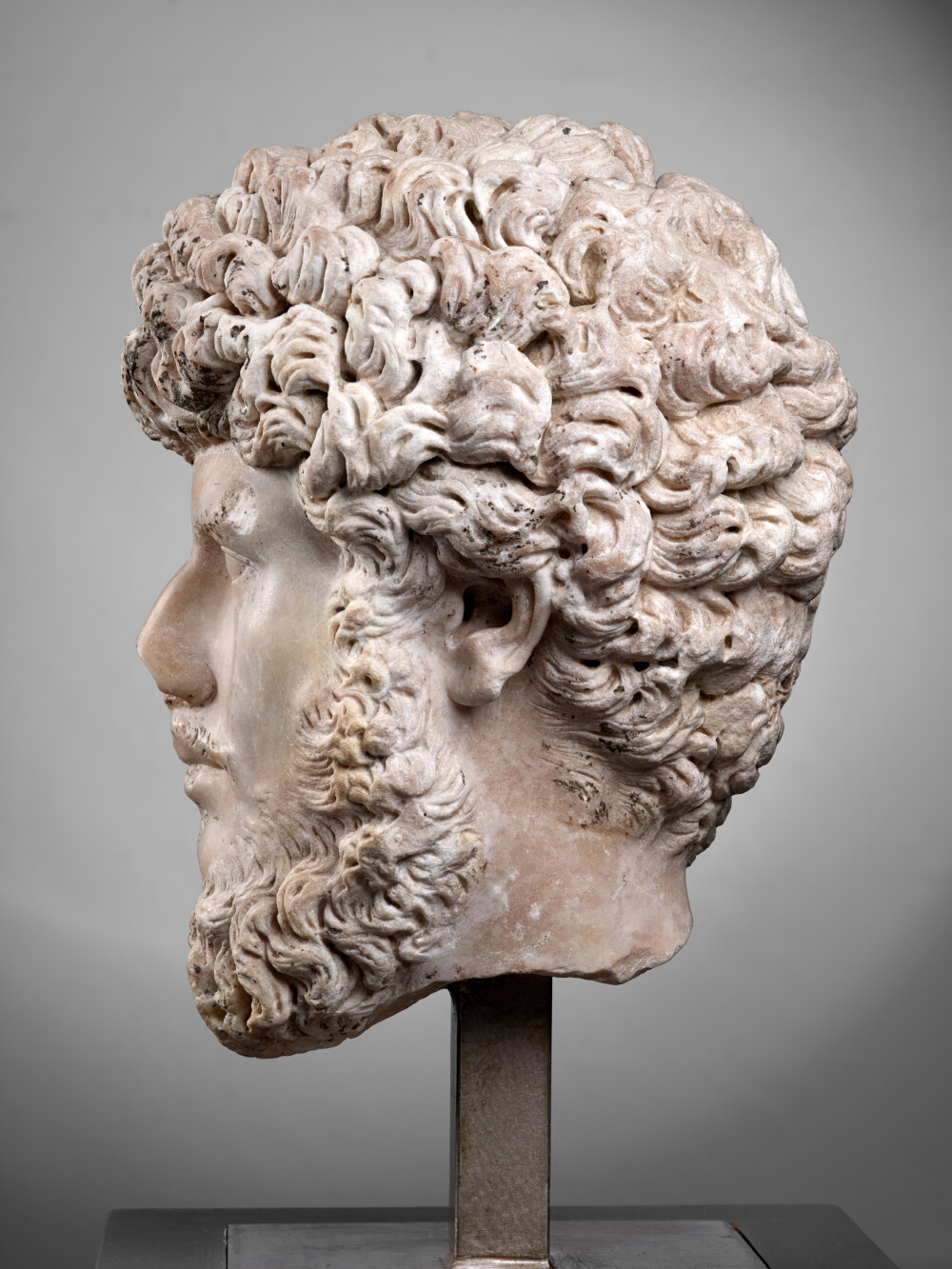
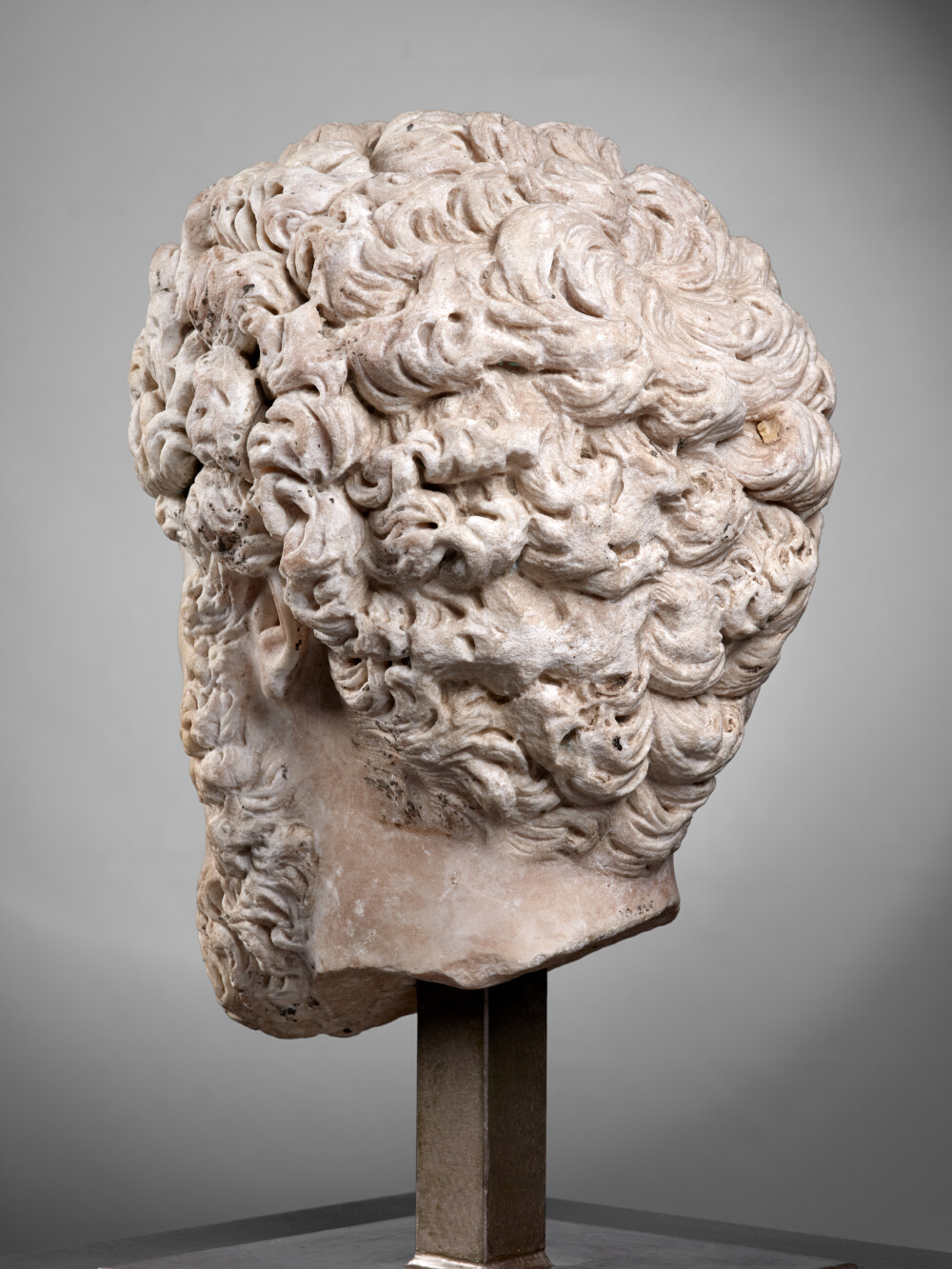
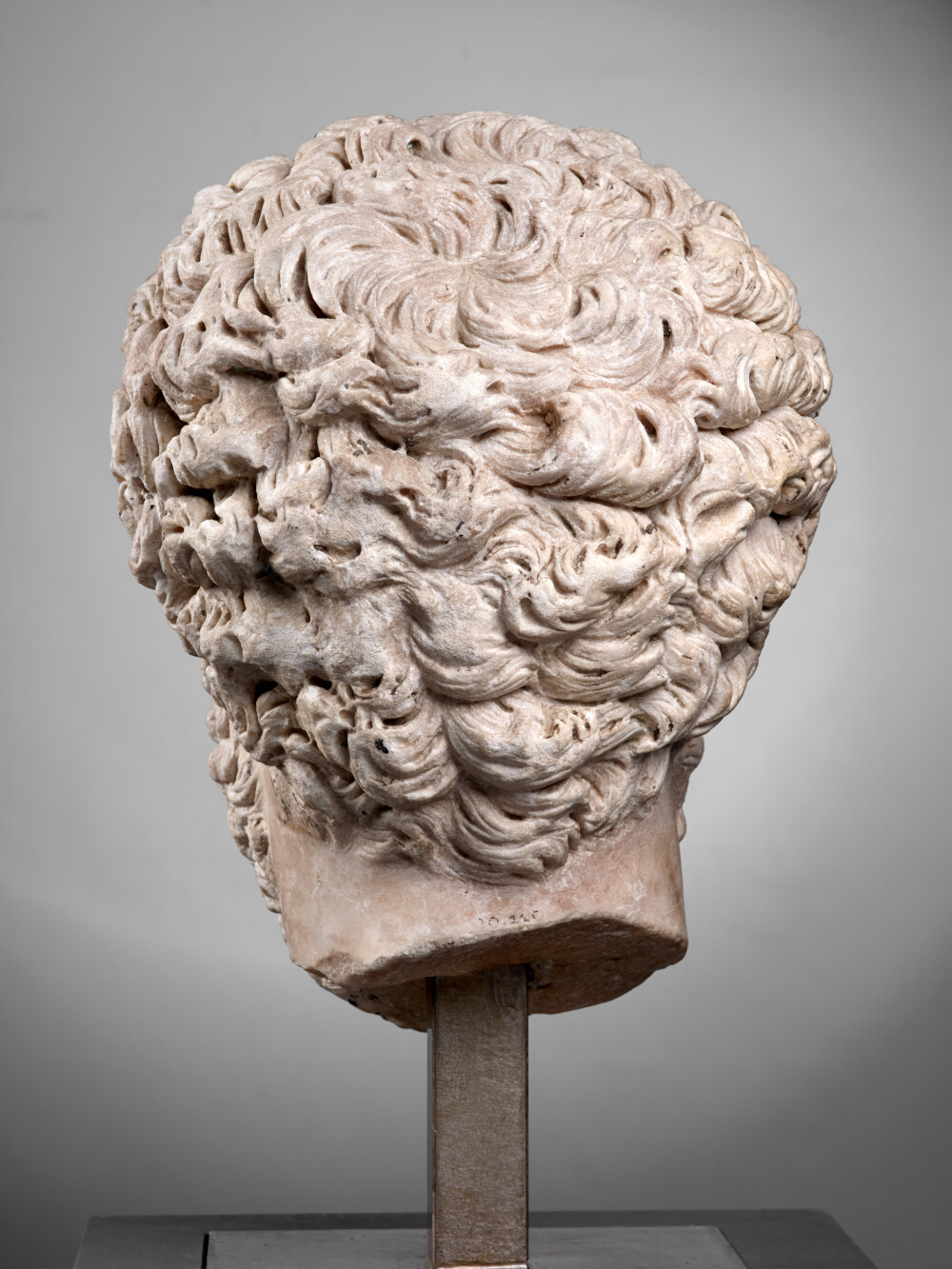
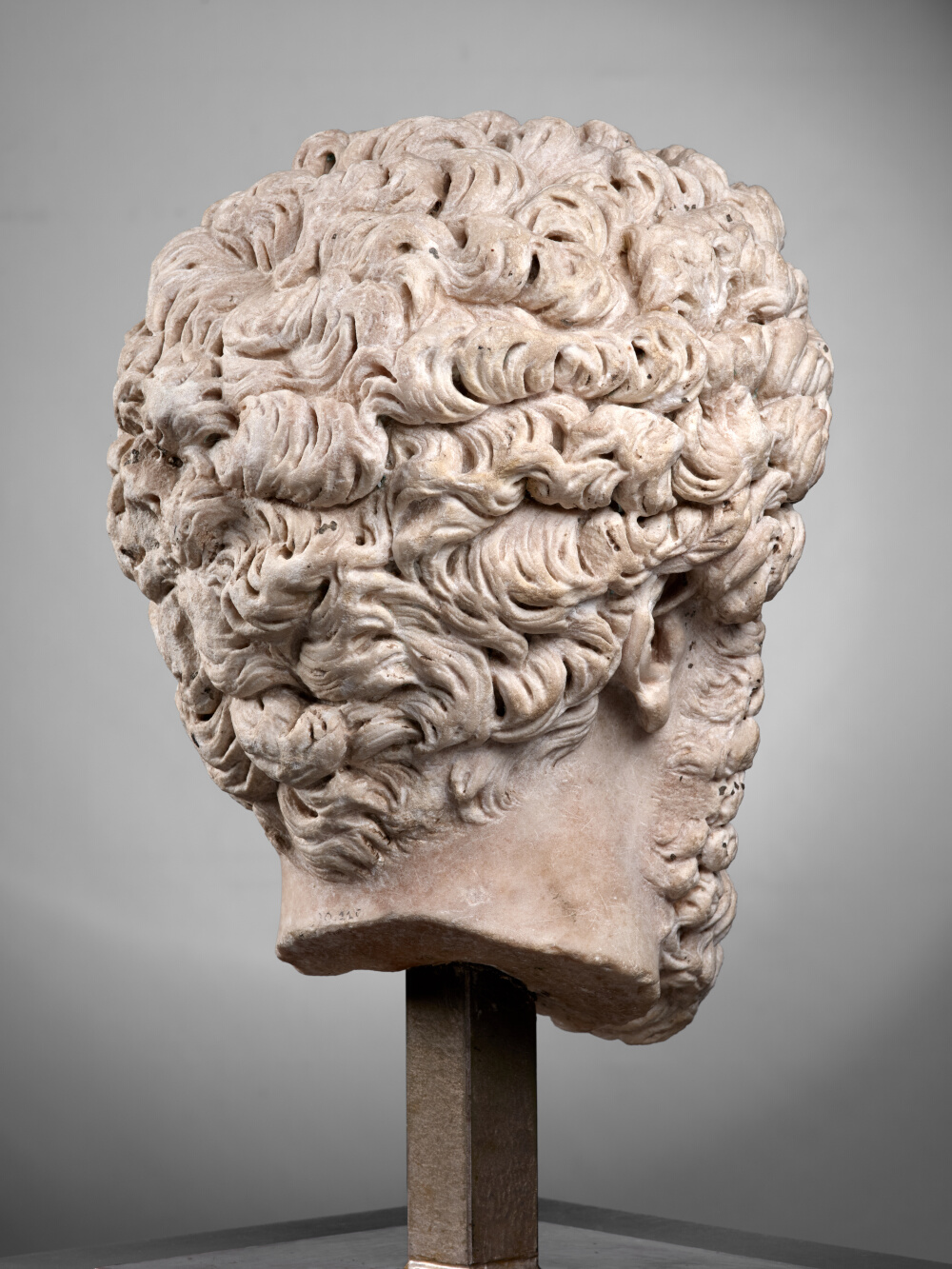
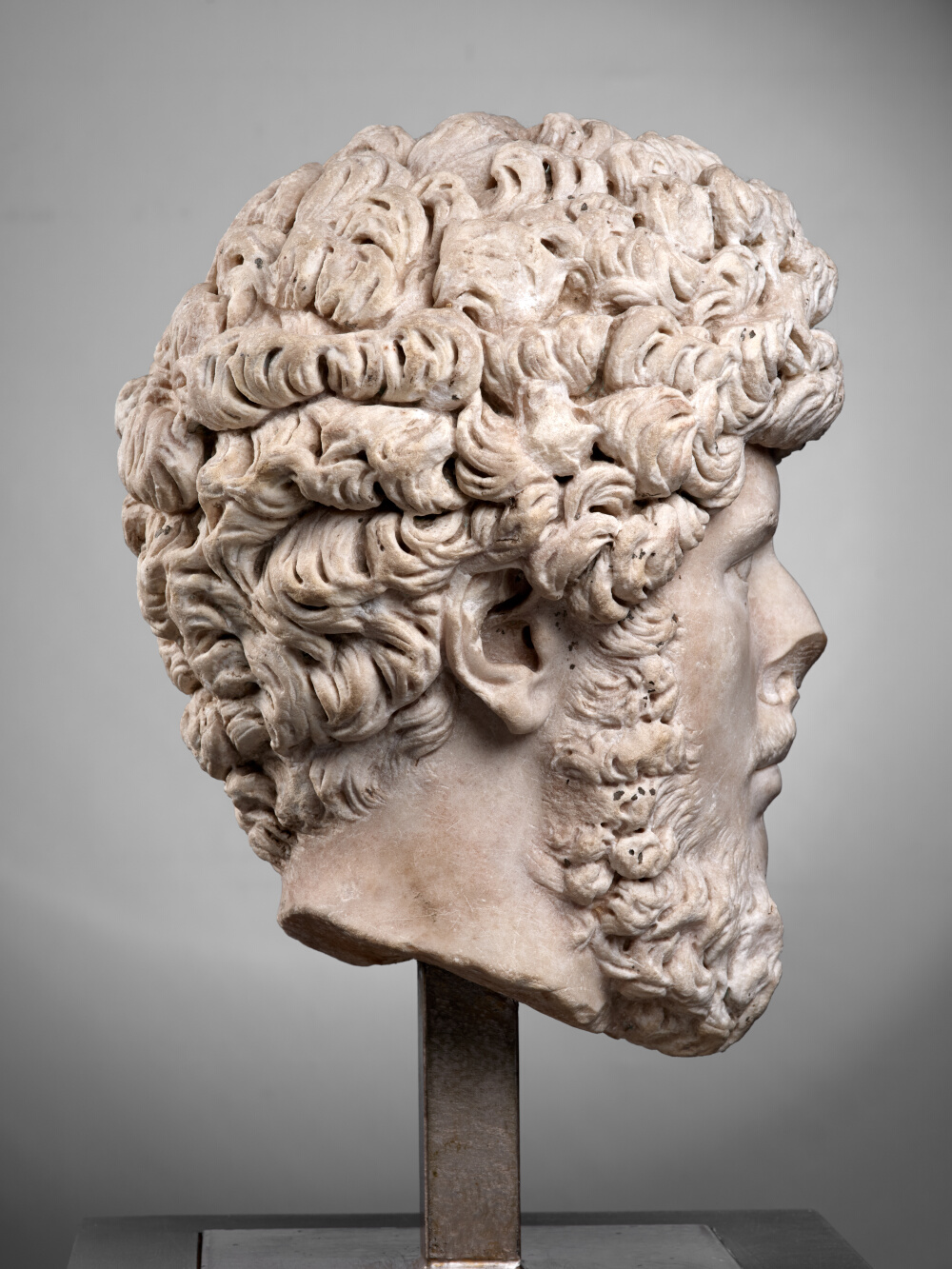
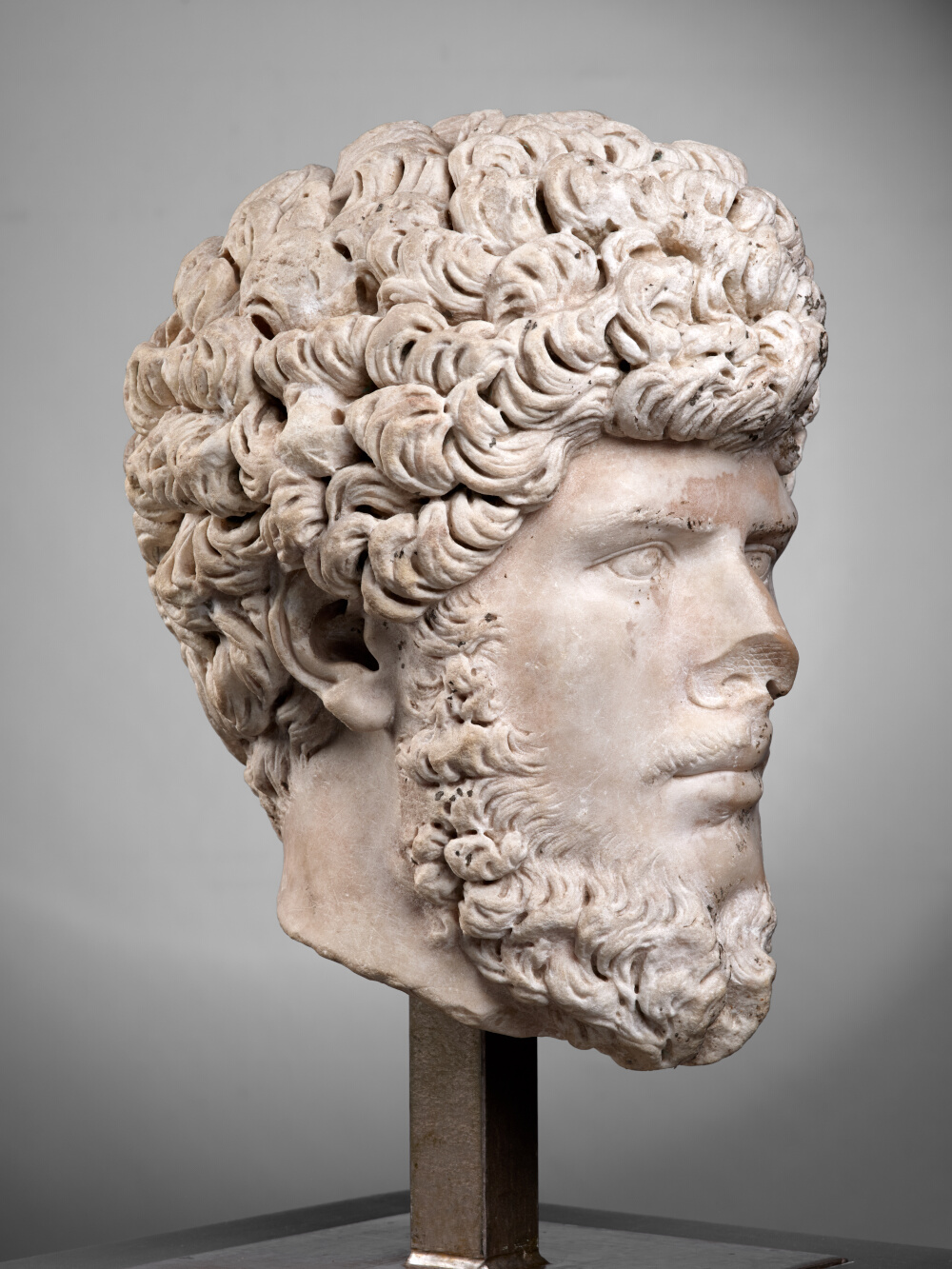
- Biographic data
- 130 - 169
Co-emperor with Marcus Aurelius from 161 to 169 - Date de création
- Between 161 and 169
- Type
- of the "IV Samtherrschaftstypus » type, during his corule with Marcus Aurelius)
- Material
- Göktepe marble, district 3 (Turkey)
- Dimensions
- H. 35,5 x l. 26,5 x P. 27 (cm)
- Inventory number
- Ra 63
- Photo credits
- Daniel Martin
The young Lucius Ceionius Commodus was adopted by Antoninus Pius at Hadrian’s request on the 25th February 138, at the same time as the future Marcus Aurelius. From then onwards he went by the name of Lucius Aelius Aurelius Commodus, but was better known as Lucius Verus. From the age of seven, he became part of the gens Aurelia made up of Antoninus’s family. Portraits of the young prince as a child and adolescent were therefore safeguarded (three successive types, two of which correspond to those of Marcus), as were those of his adoptive brother Marcus.
Although he was part of the Domus Augusta, according to the Historia Augusta (Life of Verus, 3, 4), Verus « lived for a long time as a simple citizen, without enjoying any of the marks of honour that were lavished on Marcus ». But he was appointed consul in 154 and 161. When Antoninus died on the 7th March 161, Marcus Aurelius invested Lucius with imperial dignity, conferred all honours on him (annual tribune’s power was also bestowed on him, and he became consul again in 167) and shared his power with him.
It is at this time that the numerous portraits were made (about a hundred of them are known today), representing him as a mature, 31-year old man. During the eight years of his joint reign alongside Marcus Aurelius, his image remained unchanged, as did the type III depicting Marcus Aurelius, which also remained unchanged from 161 to the death of Verus (January-February 169), and was similarly disseminated throughout the Empire. The only differences that can be observed from one copy to the next are the result of different workshop practices. One example is the extensive use of the drill bit that characterises the portrait statue found in Chiragan, like most of those that are still extant. Yet this is not reproduced in some copies made by other workshops, where the hair is almost exclusively worked using straight chisels (such as the one discovered in the colony forum, in modern-day Terragona). Thanks to his great drilling skills, the sculptor who created the head in Toulouse has done a masterful and extremely precise job of reproducing the curls of the « Urbild » (the prototype created by the imperial palace workshops), including at the back and at the nape of the neck, where the hair tends to resemble a lush plant. The abundant curls that falls quite low on the forehead were subsequently imitated in private portraits produced during the same years, as dandies strove to reproduce the emperor’s hairstyle (the Historia Augusta, Life of Verus, 10, 7 speaks of the great care he lavished on his blond hair), thus creating a veritable fashion that is still reflected in many portraits in modern-day museums, which are often mistakenly identified as portraits of Verus.
According to J.-C. Balty 2012, Les portraits romains, 1 : Le siècle des Antonins, 1.2 (Sculptures antiques de Chiragan (Martres-Tolosane), Toulouse, p. 233-242.
Bibliography
- Balty, Cazes, Rosso 2012 J.-C. Balty, D. Cazes, E. Rosso, Les portraits romains, 1 : Le siècle des Antonins, 1.2 (Sculptures antiques de Chiragan (Martres-Tolosane), Toulouse. p. 38, 39 ; fig. 34-37
- Bernoulli 1882 J.J. Bernoulli, Römische Ikonographie, Stuttgart. p. 210, no 41
- Braemer 1952 F. Braemer, « Les portraits antiques trouvés à Martres-Tolosane, » Bulletin de la Société Nationale des Antiquaires de France, pp. 143–148. p. 145
- Cazes et al. 1999 D. Cazes, E. Ugaglia, V. Geneviève, L. Mouysset, J.-C. Arramond, Q. Cazes, Le Musée Saint-Raymond : musée des Antiques de Toulouse, Toulouse-Paris. p. 125
- Du Mège 1835 A. Du Mège, Description du musée des Antiques de Toulouse, Toulouse. p. 116-117, no 207
- Du Mège 1844 A. Du Mège, Description du musée des Antiques de Toulouse (document manuscrit ). no 369
- Du Mège 1828 A. Du Mège, Notice des monumens antiques et des objets de sculpture moderne conservés dans le musée de Toulouse, Toulouse. p. 66-67, no 128
- Espérandieu 1908 É. Espérandieu, Recueil général des bas-reliefs de la Gaule romaine, 2. Aquitaine, Paris. p. 83, no 987
- Rachou 1912 H. Rachou, Catalogue des collections de sculpture et d’épigraphie du musée de Toulouse, Toulouse. p. 44, no 63
- Roschach 1892 E. Roschach, Catalogue des musées archéologiques de la ville de Toulouse : Musée des Augustins, Musée Saint-Raymond, Toulouse. p. 34, no 63
- Roschach 1865 E. Roschach, Catalogue des antiquités et des objets d’art, Toulouse. no 63
- Rosso 2006 E. Rosso, L’image de l’empereur en Gaule romaine : portraits et inscriptions (Archéologie et histoire de l’art), Paris. p. 463-465, no 222
- Wegner 1939 M. Wegner, Die Herrscherbildnisse in antoninischer Zeit (Das römische Herrscherbild), Berlin. p. 247
- Wegner, Unger 1979 M. Wegner, R. Unger, « Verzeichnis der Kaiserbildnisse von Antoninus Pius bis Commodus, » Boreas. Münstersche Beiträge zur Archäologie, 2, pp. 87–181. p. 62
- Musée Saint-Raymond 2011 Musée Saint-Raymond, L’image et le pouvoir : le siècle des Antonins. Exhibition, Musée Saint-Raymond, Toulouse, 19 November 2011 - 18 March 2012, Toulouse. p. 56
- Musée Saint-Raymond 1995 Musée Saint-Raymond, Le regard de Rome : portraits romains des musées de Mérida, Toulouse et Tarragona. Exhibition, Mérida, Museo nacional de arte romano ; Toulouse, Musée Saint-Raymond ; Tarragone, Museu nacional arqueològic de Tarragona, 1995, Toulouse. p. 168
- Bulletin municipal Toulouse 1936 Bulletin municipal Toulouse, Bulletin municipal, Toulouse. p. 651
To cite this notice
Capus P., "Head of Lucius Verus", in The sculptures of the roman villa of Chiragan, Toulouse, 2019, online <https://villachiragan.saintraymond.toulouse.fr/en/ark:/87276/a_ra_63>.